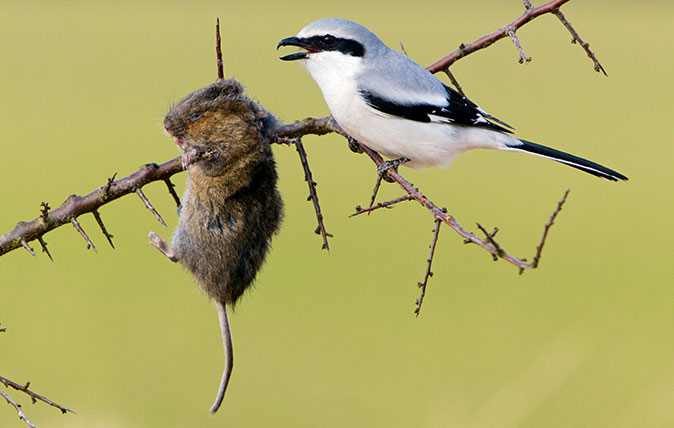Peregrine falcons are astonishing predators and remarkably adaptable, says Vicky Liddell.
They’re doing very well living alongside man
Peregrines have no natural predators, though egg poaching and pesticides eaten by their prey have hit their numbers in the past. Today, they’re doing well living in towns and cities.
Many churches and cathedrals have peregrine nests — including Norwich, Leicester, Exeter and Worcester — while they’ve also nested successfully everywhere from telecom towers to Southampton Docks. ‘They’re very resilient birds and will adapt to all sorts of unusual locations,’ says Keith Betton of the Hampshire Ornithological Society.

Peregrine falcon chicks in an urban nest in London. Credit: Getty
They’ve earned their reputation as global travellers
The bird’s scientific name, Falco peregrinus, means wanderer and, over the centuries, they have crossed all the major oceans of the world — the peregrines’ peregrinations, if you like.
They’re fast — almost unbelievably fast
You probably knew that already, but peregrine falcons are among the fastest creatures on the planet. They’ve been clocked at speeds of 240mph when in the midst of a ‘stoop’ — the proper name for their dive-bombing of prey from hundreds of feet above.
They eat pigeons…
Feral pigeons and collared doves make up a third of a peregrine’s diet. While this might seem a good idea for those sick of seeing our streets cluttered up with pigeons, it was less good news during the Second World War: many peregrines were killed to avoid them intercepting secret messages carried by pigeon.
…but they also have a taste for the tropical
In London, they are also partial to the odd ring- necked parakeet — the bright-green invasive species which you now see everywhere, particularly in the south west of the metropolis.

The female of the species really is more deadly
A female peregrine (falcon) weighs nearly twice as much as a male (tercel), which allows her to take larger species of prey if required.
They can see for miles
Like most birds of prey, peregrines have truly superb binocular vision — they can spot prey from a distance of nearly two miles.
They’ve inspired great human design
Scientists designing the first jet engine used peregrines’ nostrils as a model to help them control airflow at high speed.

Britain’s birds of prey: The Country Life guide to all of the UK’s raptors
Raptors’ supersonic vision, effortless aerial acrobatics and ruthless hunting instinct make them the undisputed masters of the skies, but can

Curious Questions: One for sorrow, two for joy – but why are we so superstitious about magpies?
Superstitions swirl around all manner of different birds, but never more so than with magpies. We take a look at

Beware the Great Grey Shrike: The pretty songbird with the temperament of Vlad the Impaler
Simon Lester takes a look at the great grey shrike, a delicate-looking songbird whose innocent appearance belies its sadistic tendencies




